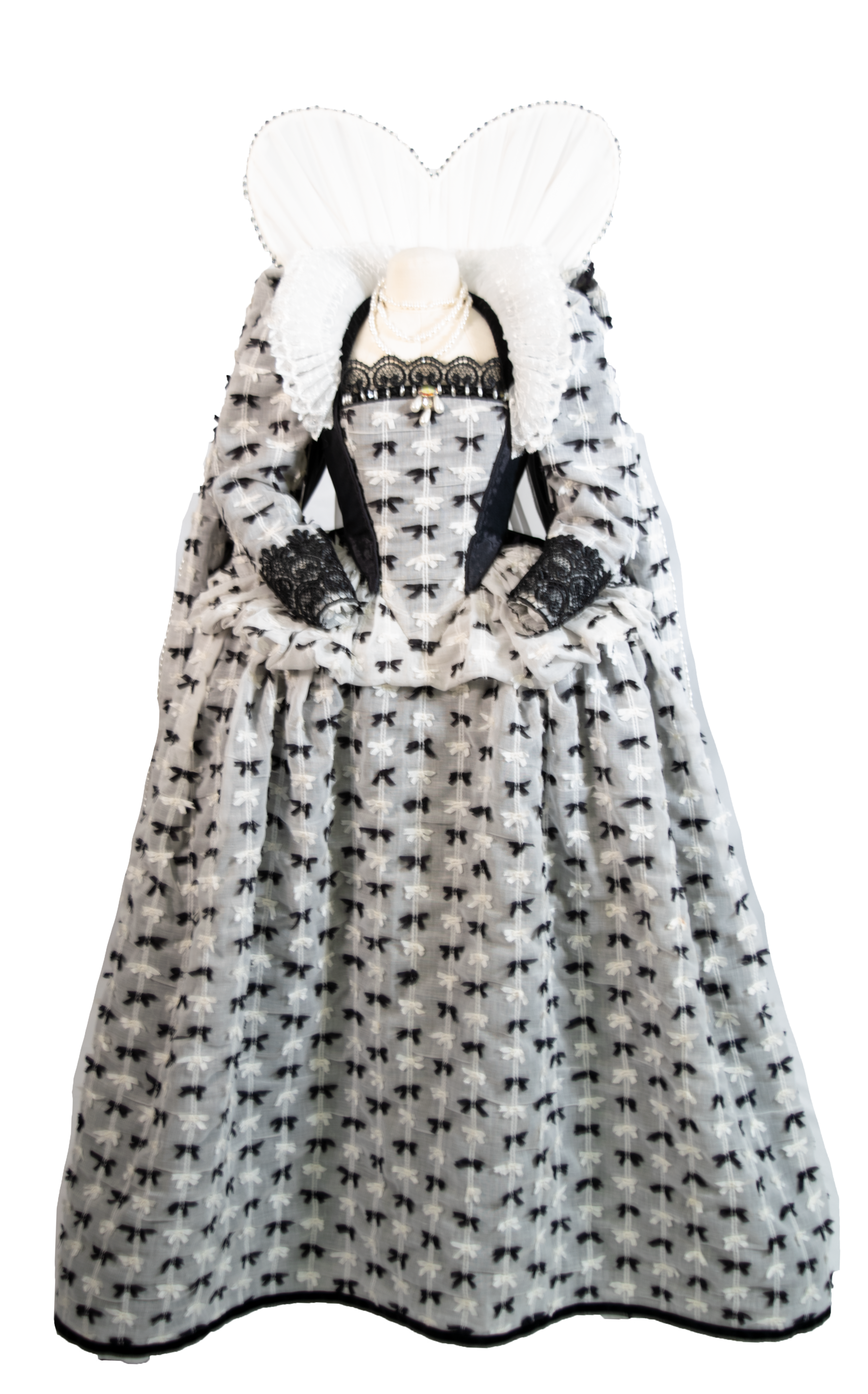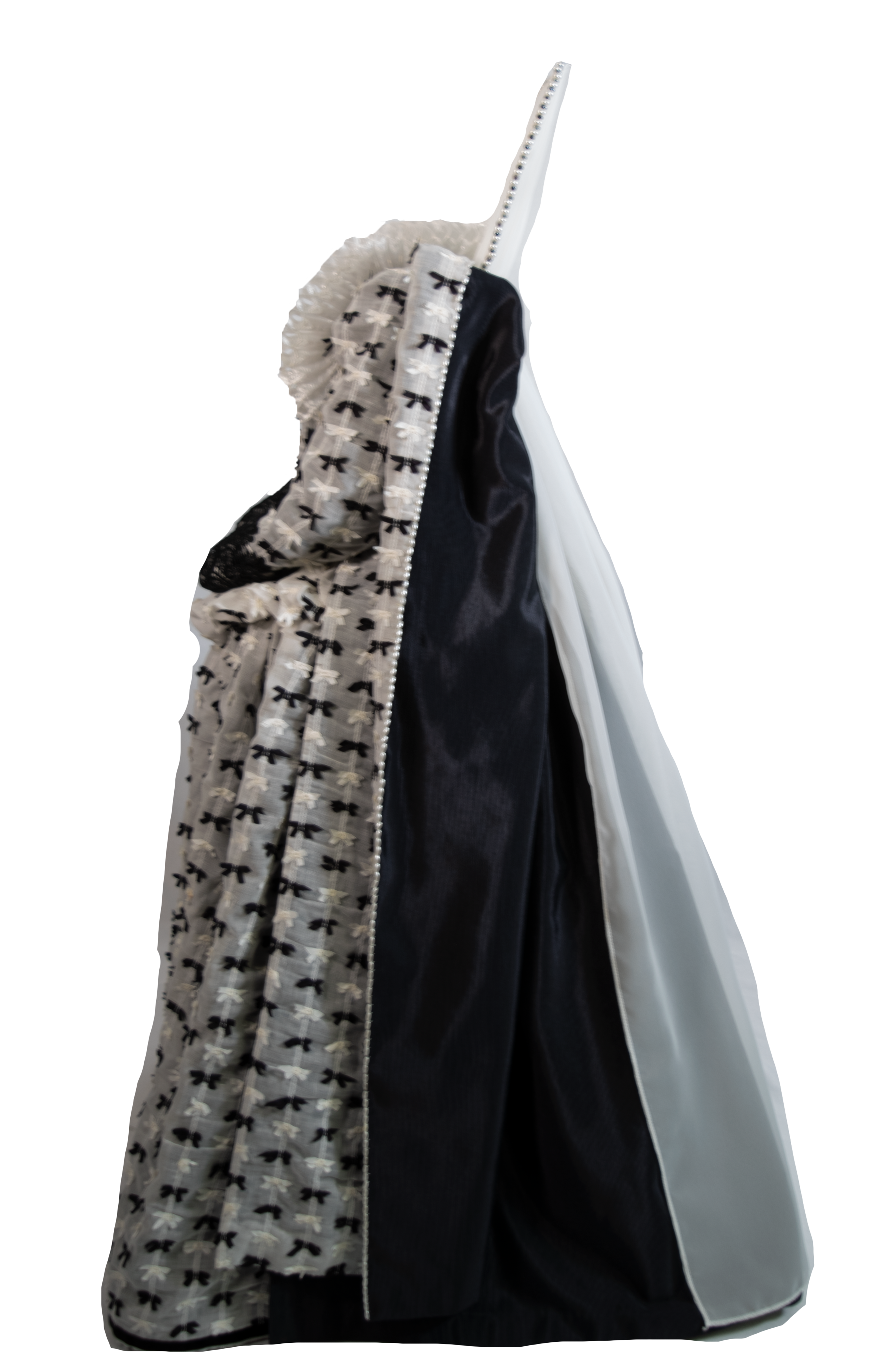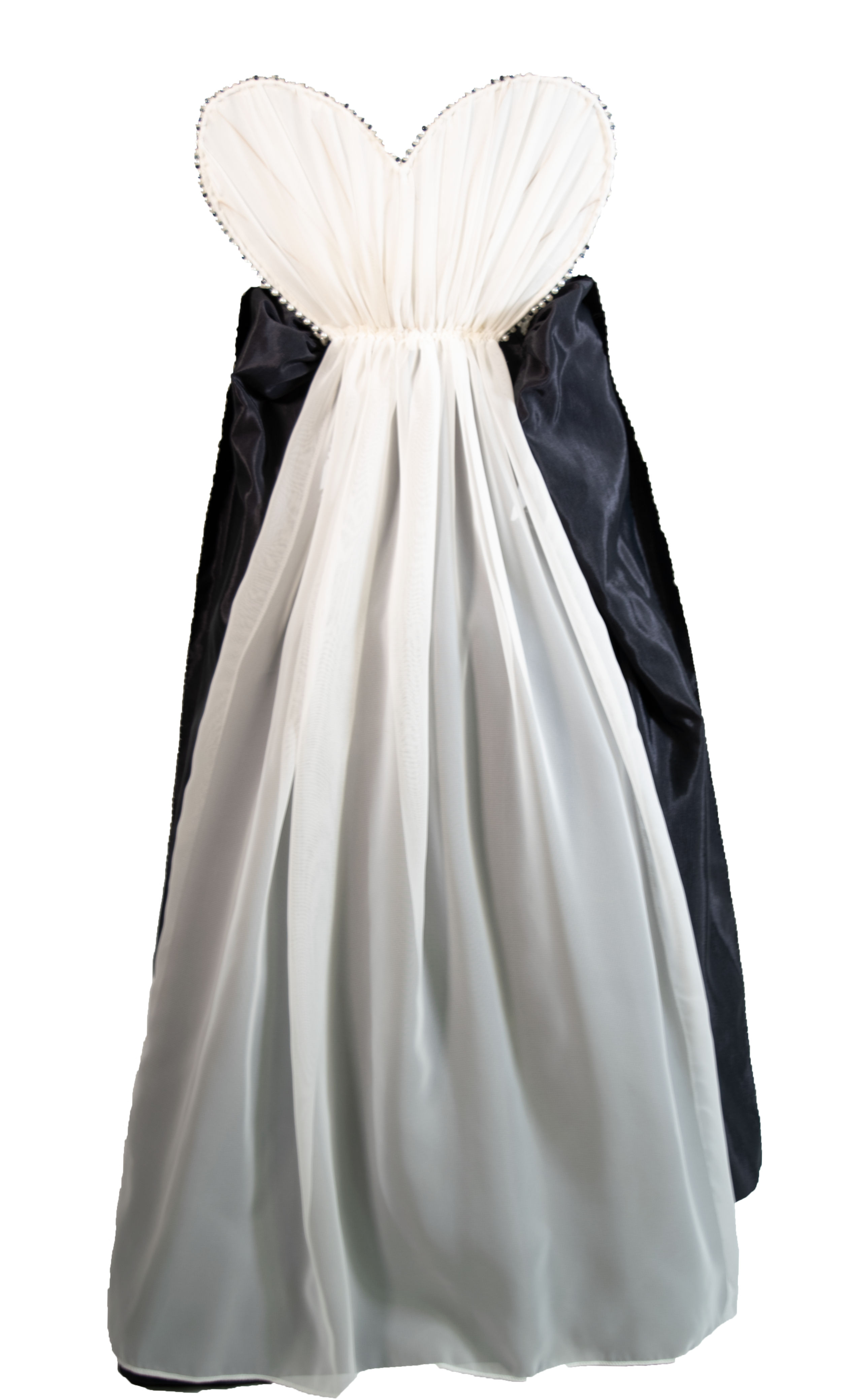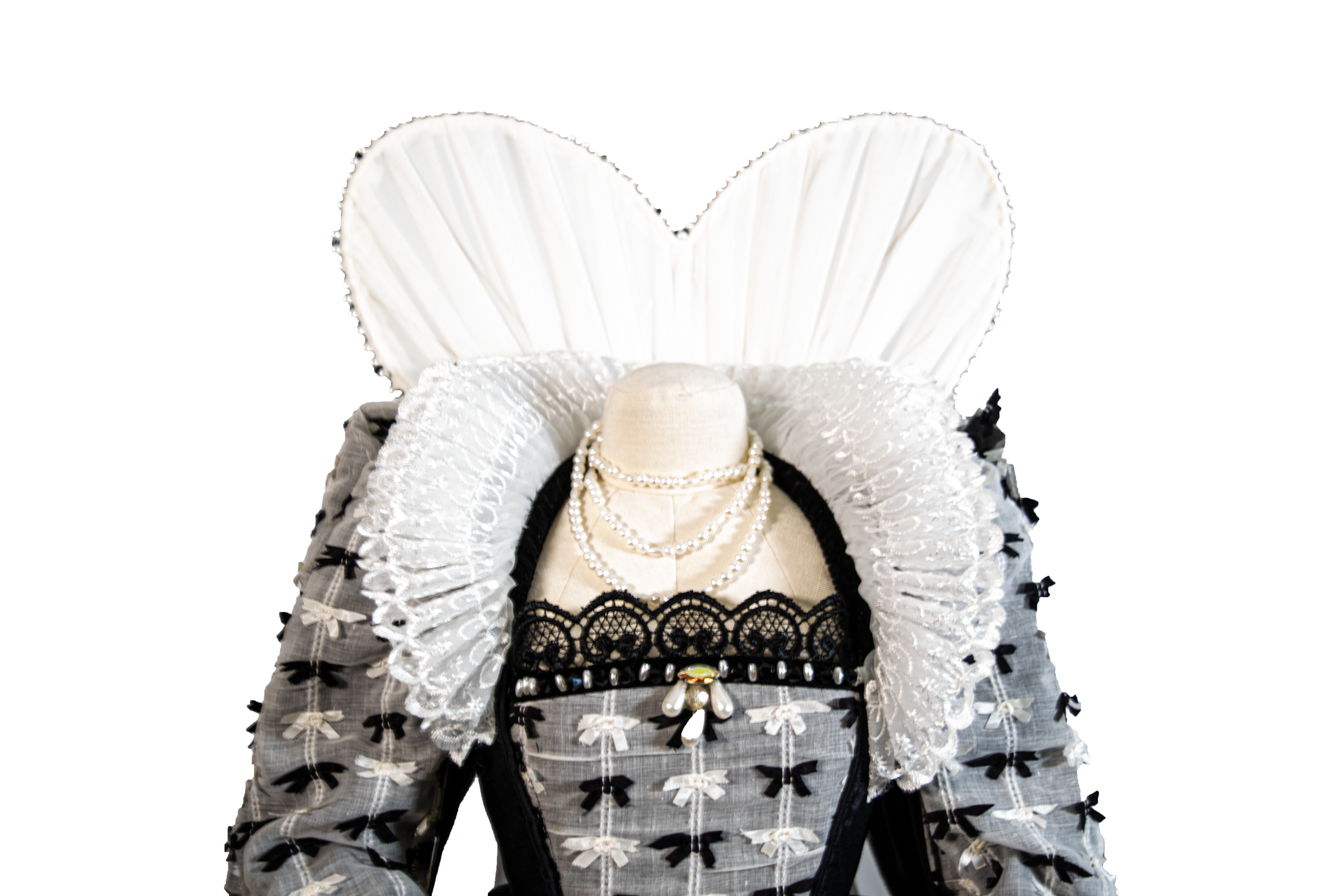Cotton Faille, Cotton Gauze, Lace, Nylon Horsehair Braid, Wire, Cotton Tape, Synthetic Georgette, Faux Pearls and Gems. (Photos by Joshua Purvis)
Worn over a French or “cartwheel” farthingale, bumroll, and petticoat for skirt support. Inspired by the Ditchley portrait of Queen Elizabeth I.
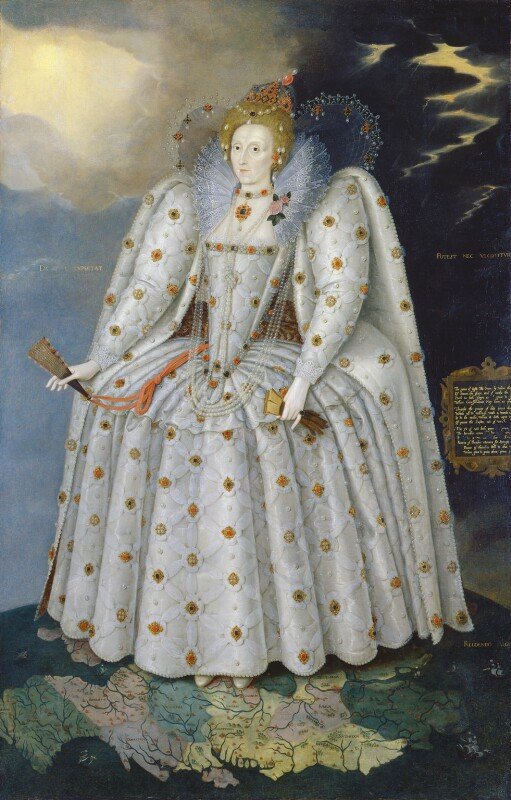
Inspirational Image
Marcus Gheeraerts the Younger (Flemish, 1561-1636). Queen Elizabeth I ('The Ditchley portrait'), ca. 1592. Oil on canvas; 241.3 x 152.4 cm (95 x 60 in). London: National Portrait Gallery
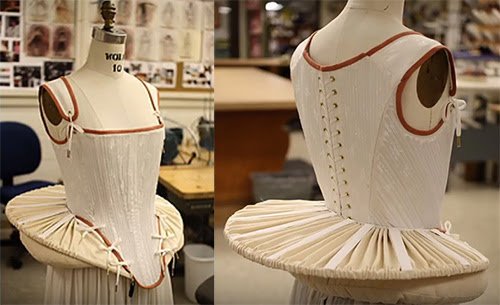
Undergarments
The cartwheel, or French, farthingale provides the almost horizontal lift to the skirts of the late 16th century, while the stays lift and compress the bust. The front point of the stays tilts the farthingale down in the front and up in the back.
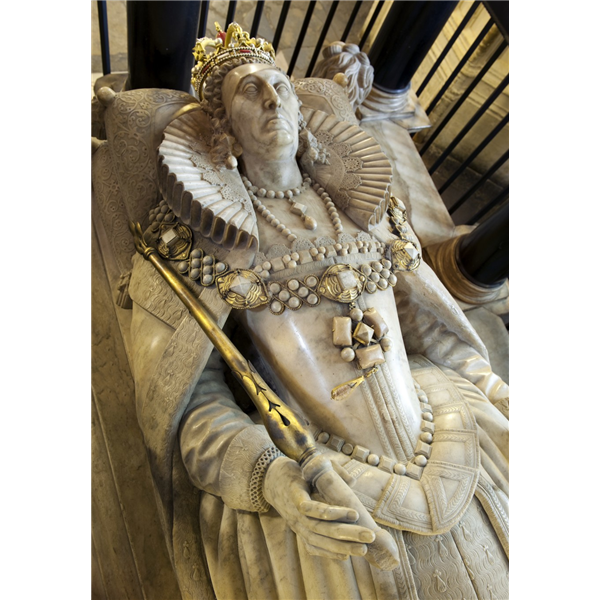
Historical Image
The tomb monument of Elizabeth I, sculpted by Maximillian Colt, 1603, in Westminster Abbey, shows the general silhouette of last decade of Elizabeth’s reign.
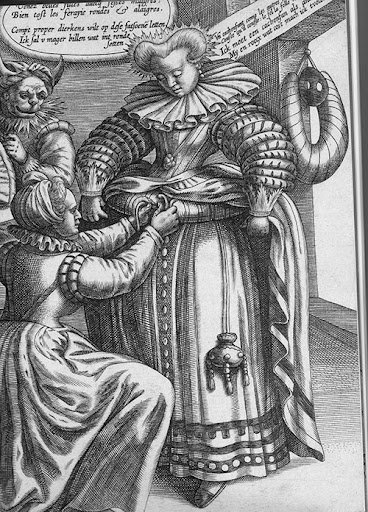
Historical Image
Padding around the hips and waist reached its zenith in the 1590s and continued well into the next century. Cartwheel farthingales were used, as were bumrolls, padded donut rolls tied around the waist.
Attributed to Maerten de Vos (Netherlandish, 1532–1603). The Vanity of Women: Masks and Bustles, ca. 1600. Engraved paper. New York: The Metropolitan Museum of Art
